
Chinese Hackberry
Celtis sinensis
In training since 1946
Gift of Shu-ying Lui, 1986
This is a deciduous tree native to East Asia. When the tree is bare in the winter you can appreciate the zig-zag effect of the pruning style beloved of Chinese penjing artists.
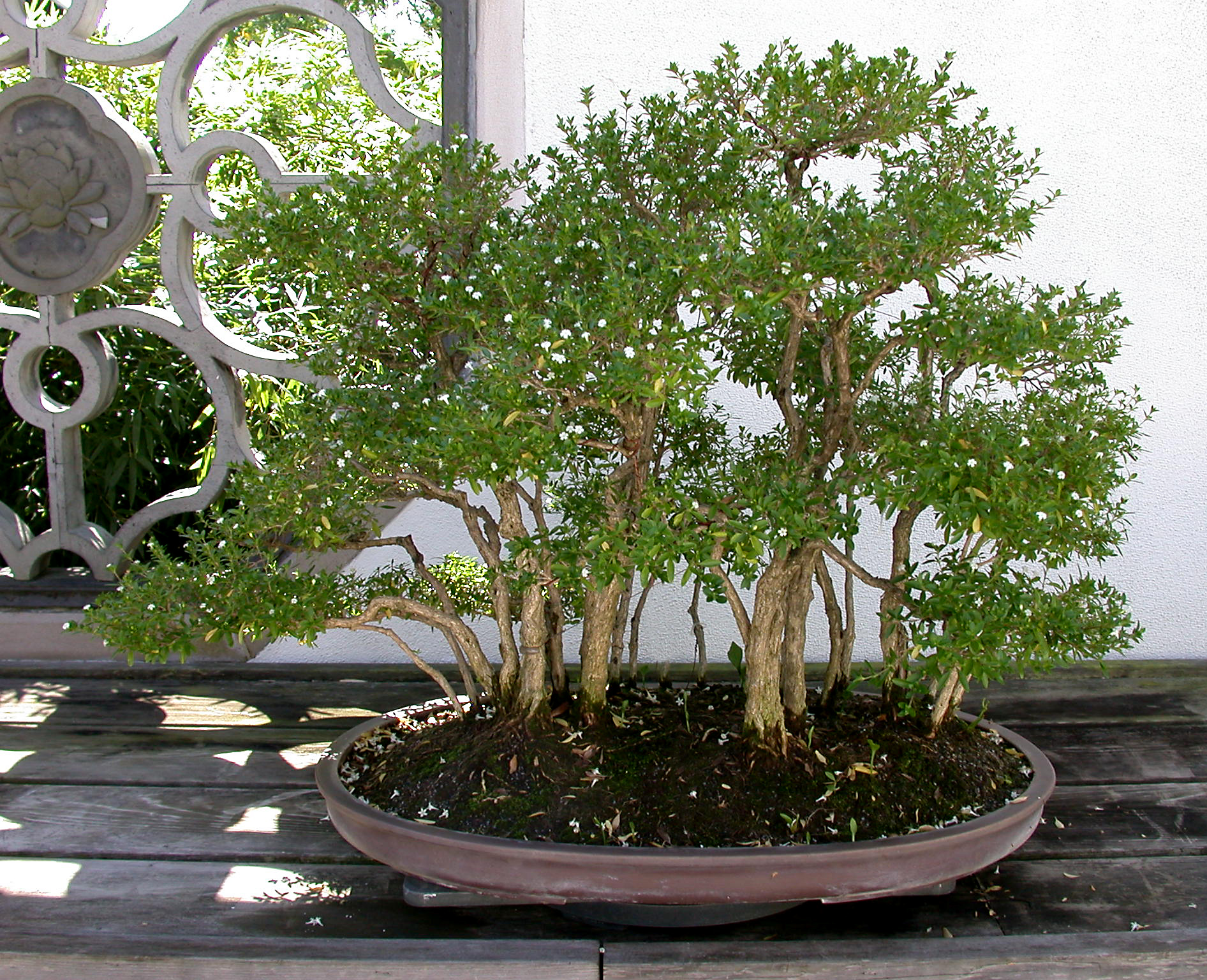
Japanese Boxthorn
Serissa japonica
In training since 1951
Gift of Shu-ying Lui, 1986
Coming from temperate regions in Asia, this species blooms practically all year round. There are usually so many tiny white flowers that it is also known as the "tree of a thousand stars."
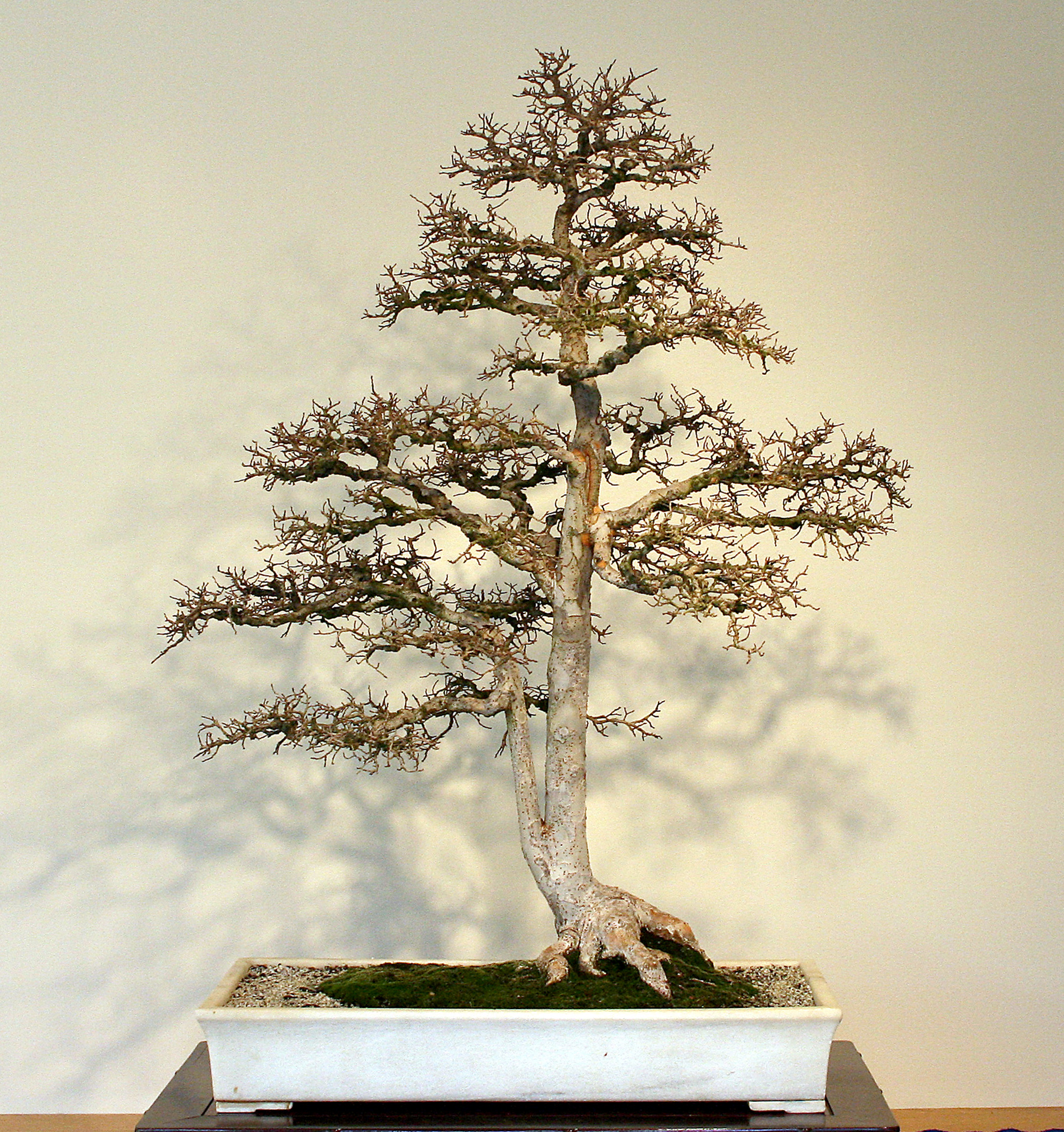
Chinese Elm
Ulmus parvifolia
In training since 1961
Gift of Shu-ying Lui, 1986
The trunk of this tree exhibits a flaking bark of grey, pink and tan "camouflage" pattern that explains its other common name--lacebark elm.
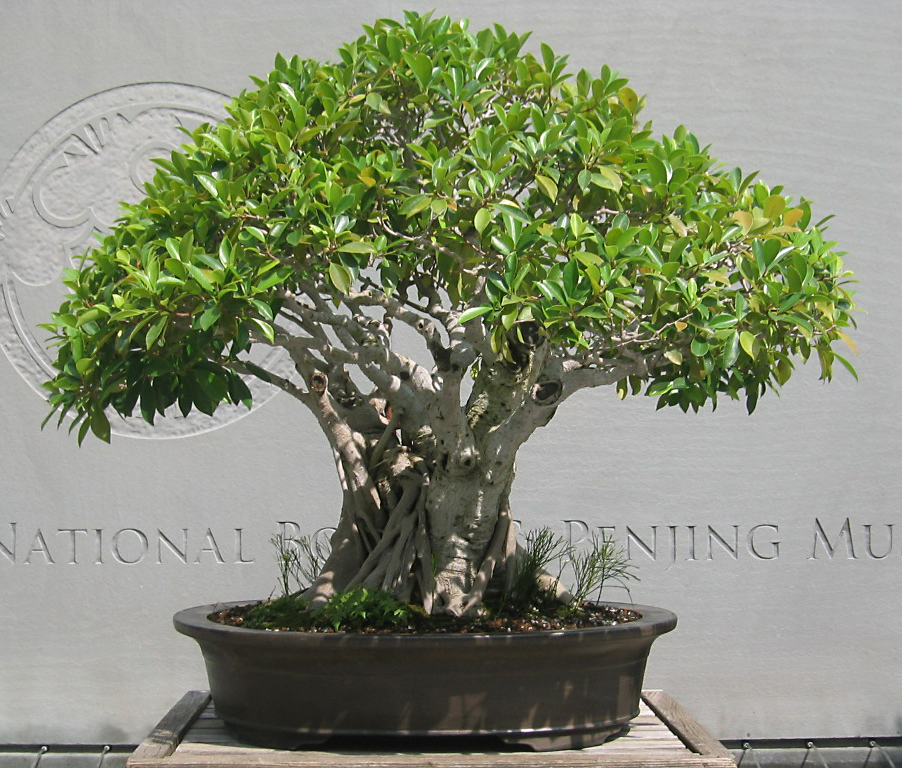
Chinese Banyan
Ficus microcarpa
In training since 1906
Gift of Shu-ying Lui, 1986
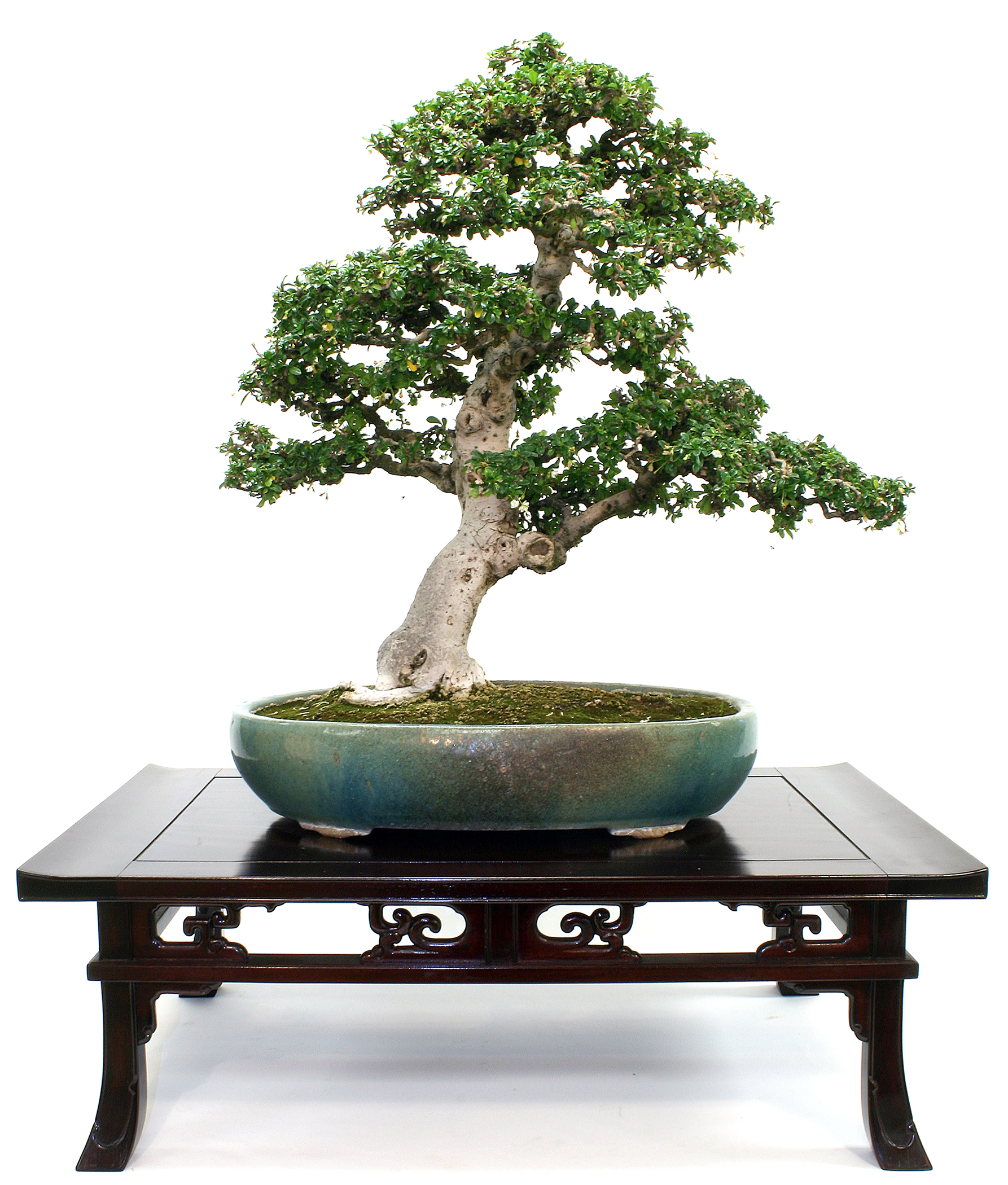
Fukien-tea
Ehretia microphylla
In training since 1956
Gift of Shu-ying Lui, 1986
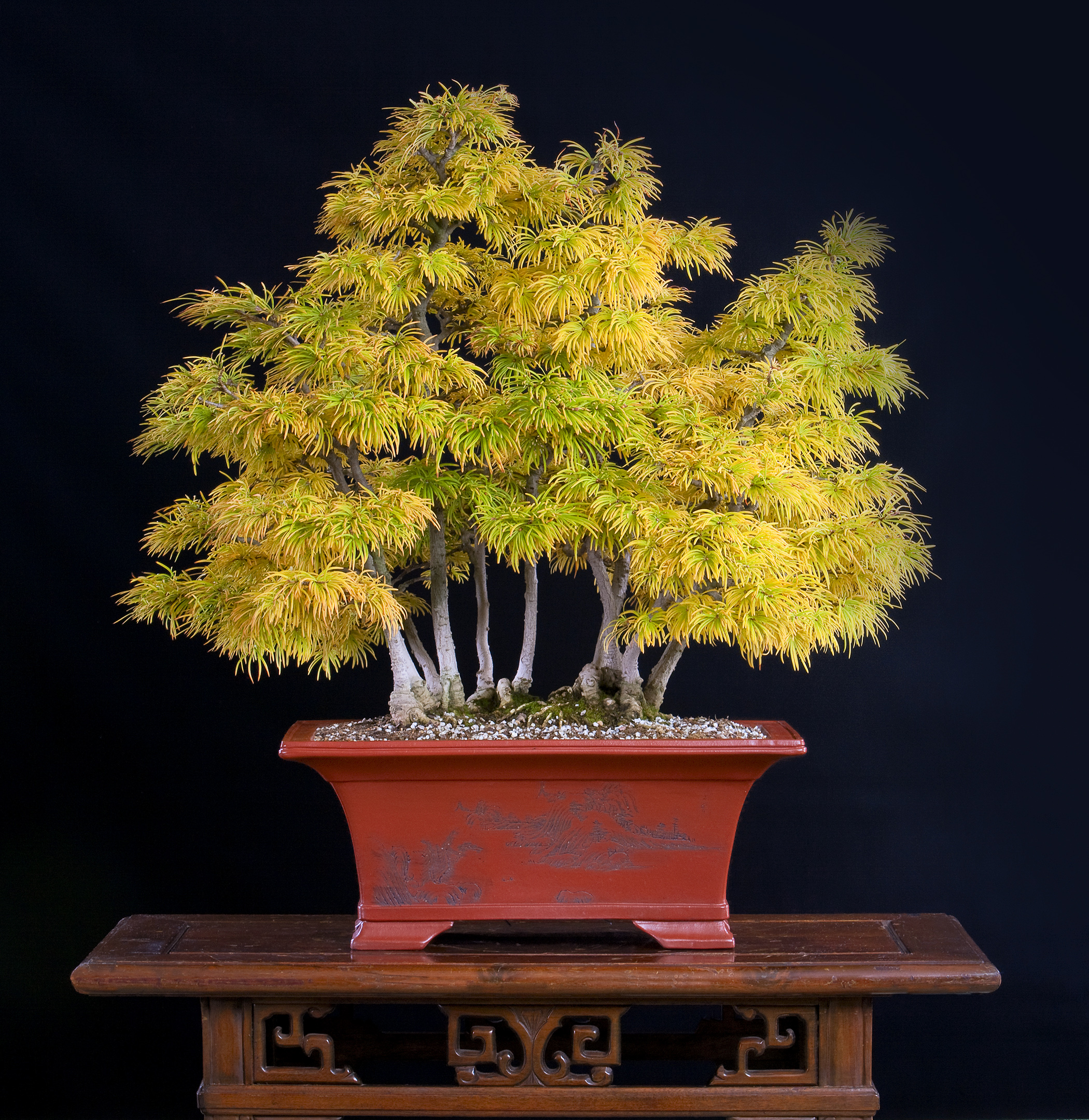
Chinese Golden-larch
Pseudolarix amabilis
In training since 1971
Gift of Shu-ying Lui, 1986
The golden-larch is a rare and unusual conifer from China that turns bright golden yellow in the fall before dropping its needles.

Chinese Elm
Ulmus parvifolia
In training since 1961
Gift of Yee-sun Wu, 1986
In pairing a rock with a tree, it is important to keep the tree from becoming too big for the rock in order to maintain a balance.
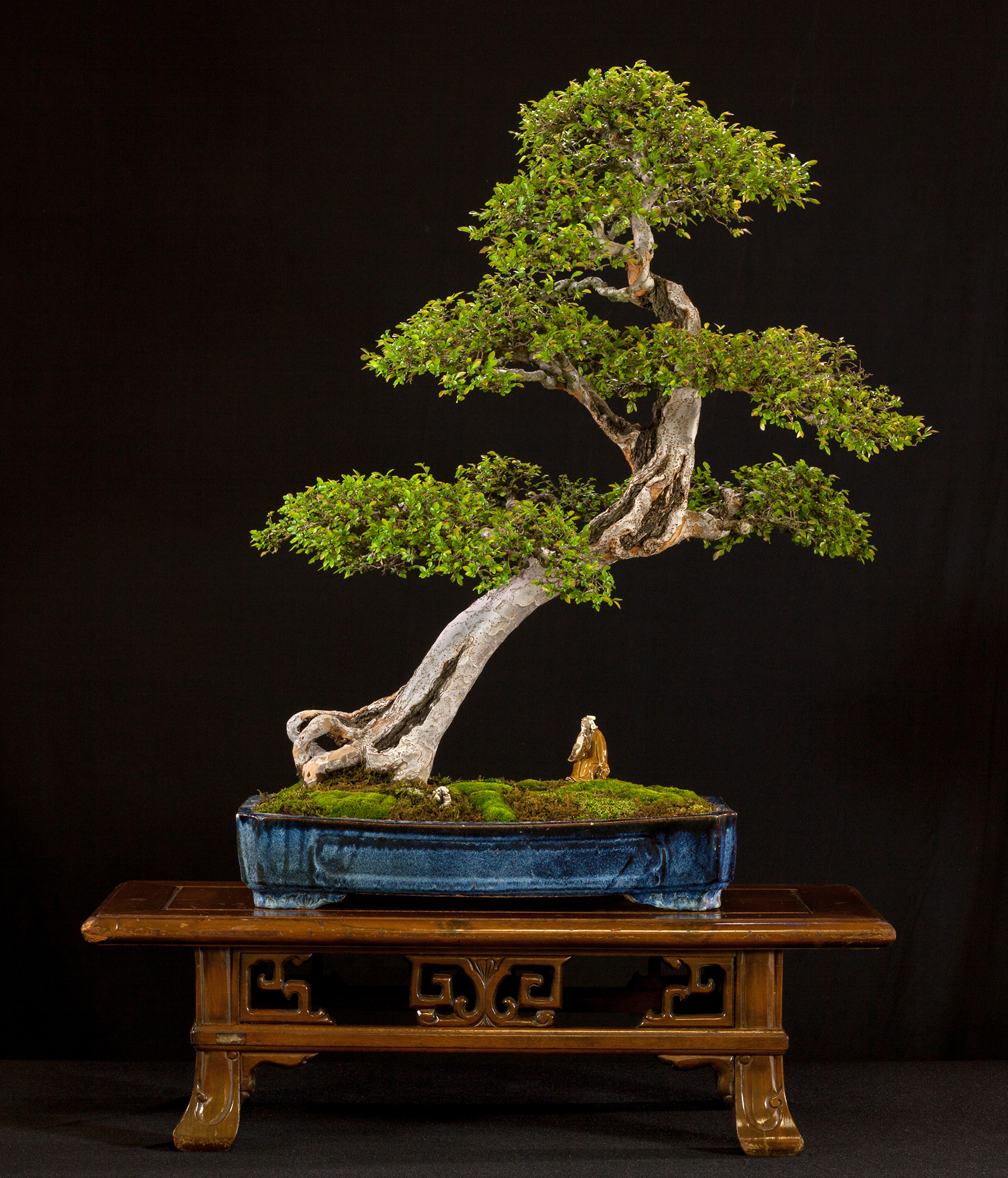
Chinese Elm
Ulmus parvifolia
In training since 1956
Gift of Yee-sun Wu, 1986
Chinese penjing are often styled with contorted roots and branches which give them a sense of lively movement.

Chinese Elm
Ulmus parvifolia
In training since 1951
Gift of Yee-sun Wu, 1986
The leaves of a Chinese elm are so tiny that if we saw a picture of this tree without the pot, we can easily be fooled into believing this is a much larger tree.

Nepal Firethorn
Pyracantha crenulata
In training since 1966
Gift of Yee-sun Wu, 1986
This forest of firethorn trees produces small red fruits that last through the winter months. In the spring, the trees are covered with fragrant white blossoms.
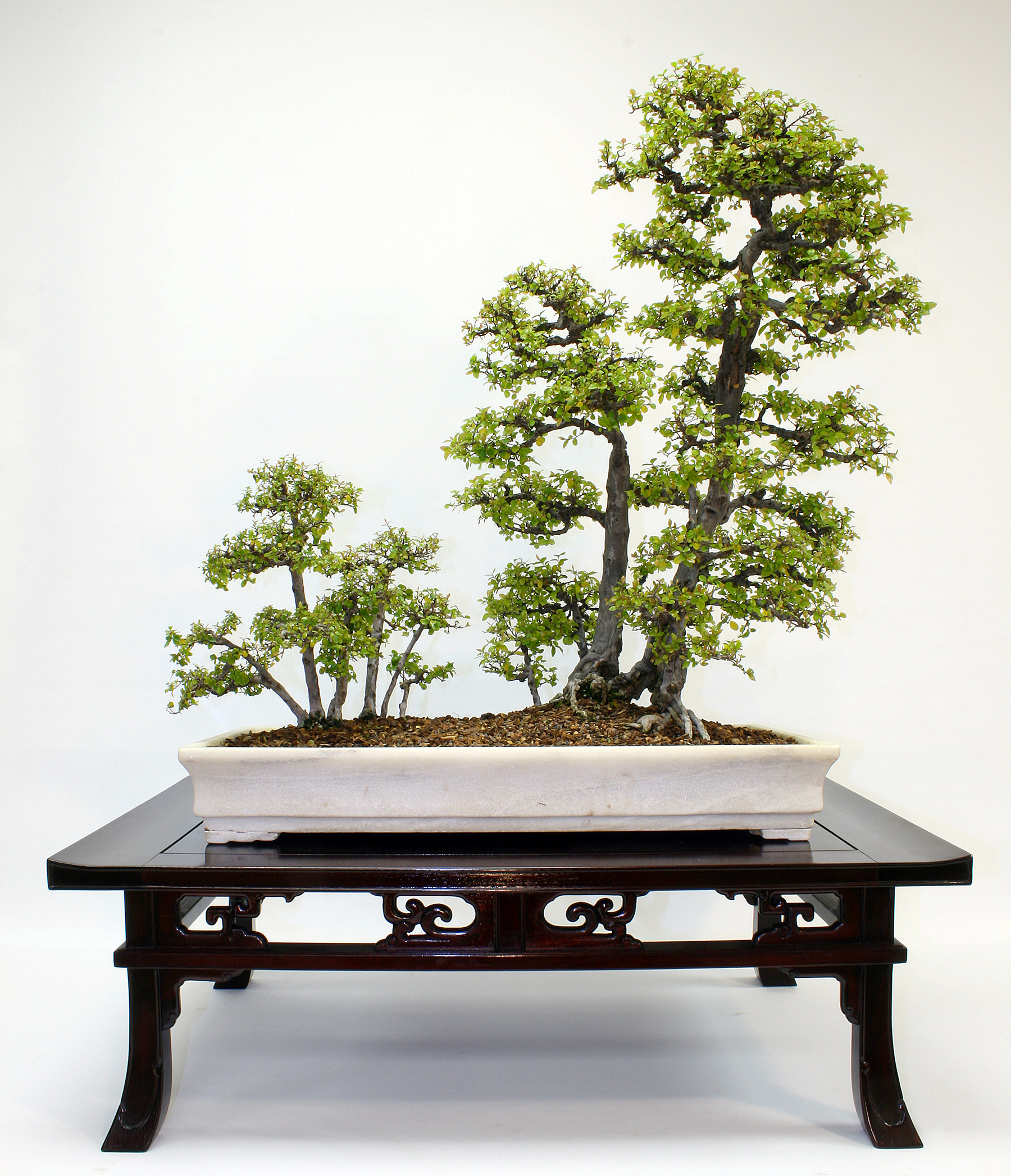
Pauper's-tea
Sageretia thea
In training since 1961
Gift of Yee-sun Wu, 1986
Penjing means "landscape in a tray." Here we see naturalistic groupings of trees as if in the wild. The white marble container or tray is unique to penjing.
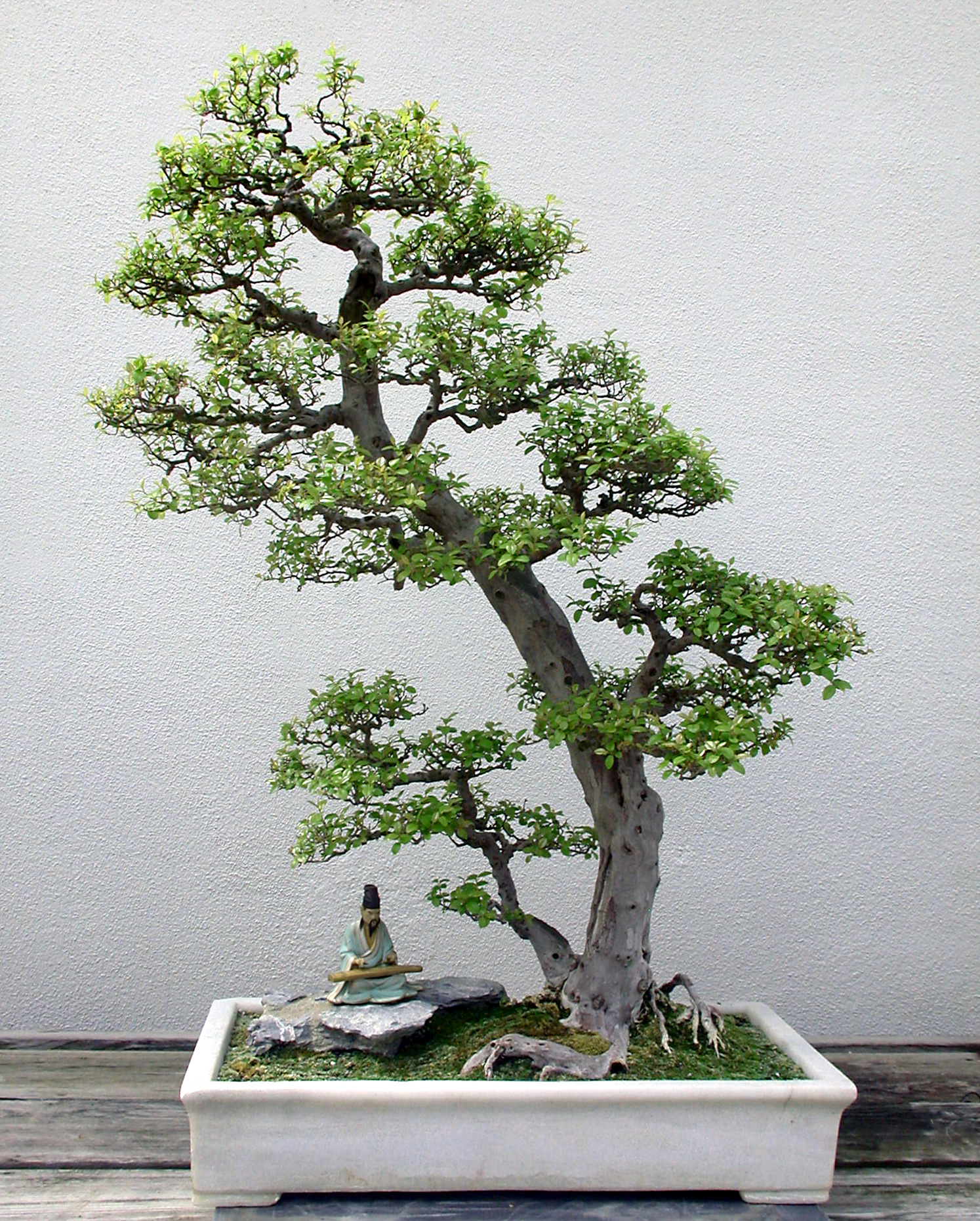
Pauper's-tea
Sageretia thea
In training since 1951
Gift of Yee-sun Wu, 1986
The Chinese love to add little figurines to their penjing. It helps us imagine what it would be like to sit under this tall tree.
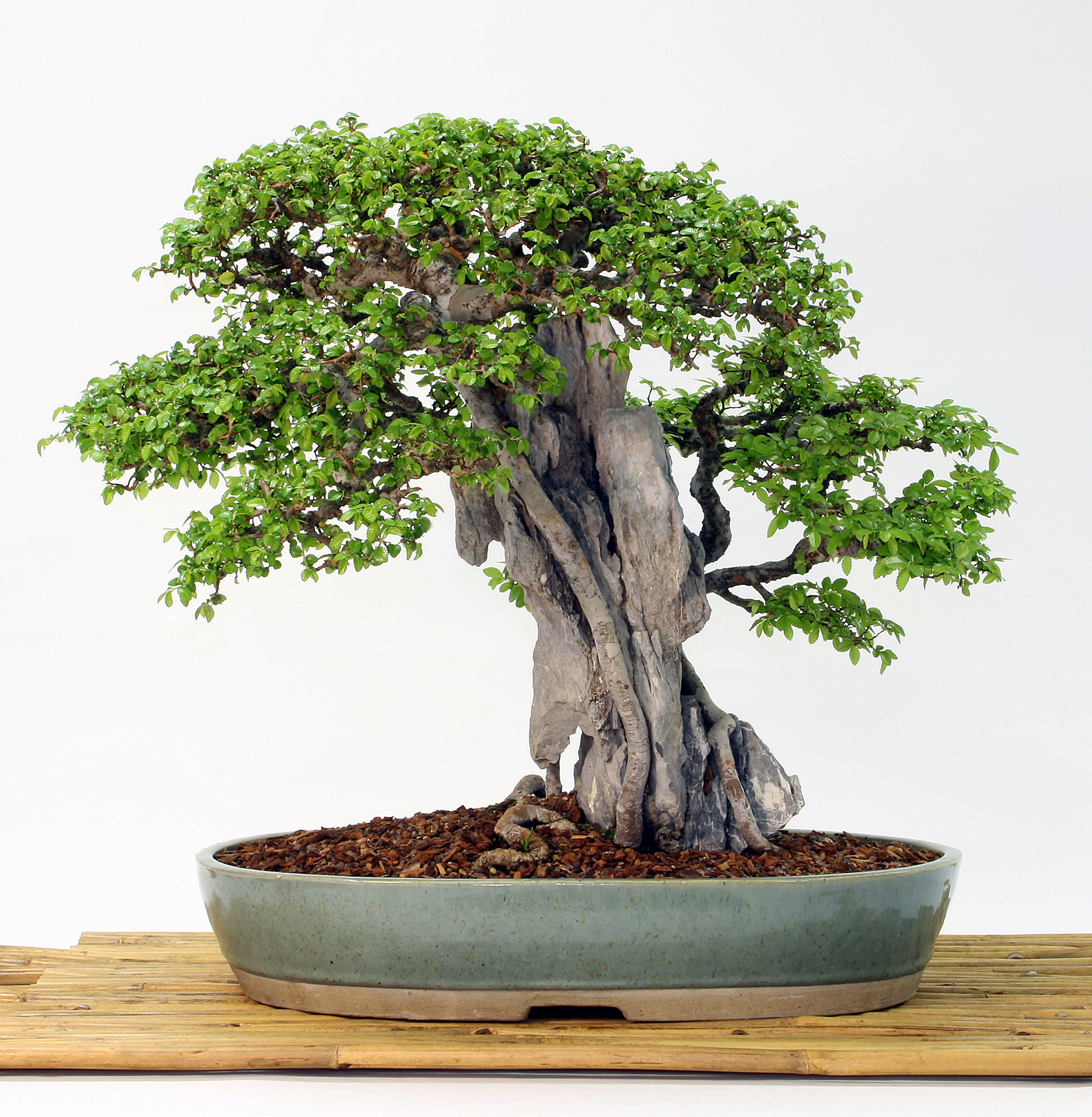
Chinese Elm
Ulmus parvifolia
In training since 1956
Gift of Yee-sun Wu, 1986
To the Chinese, viewing a penjing of a rock with a tree evokes a more distant and rugged wilderness.
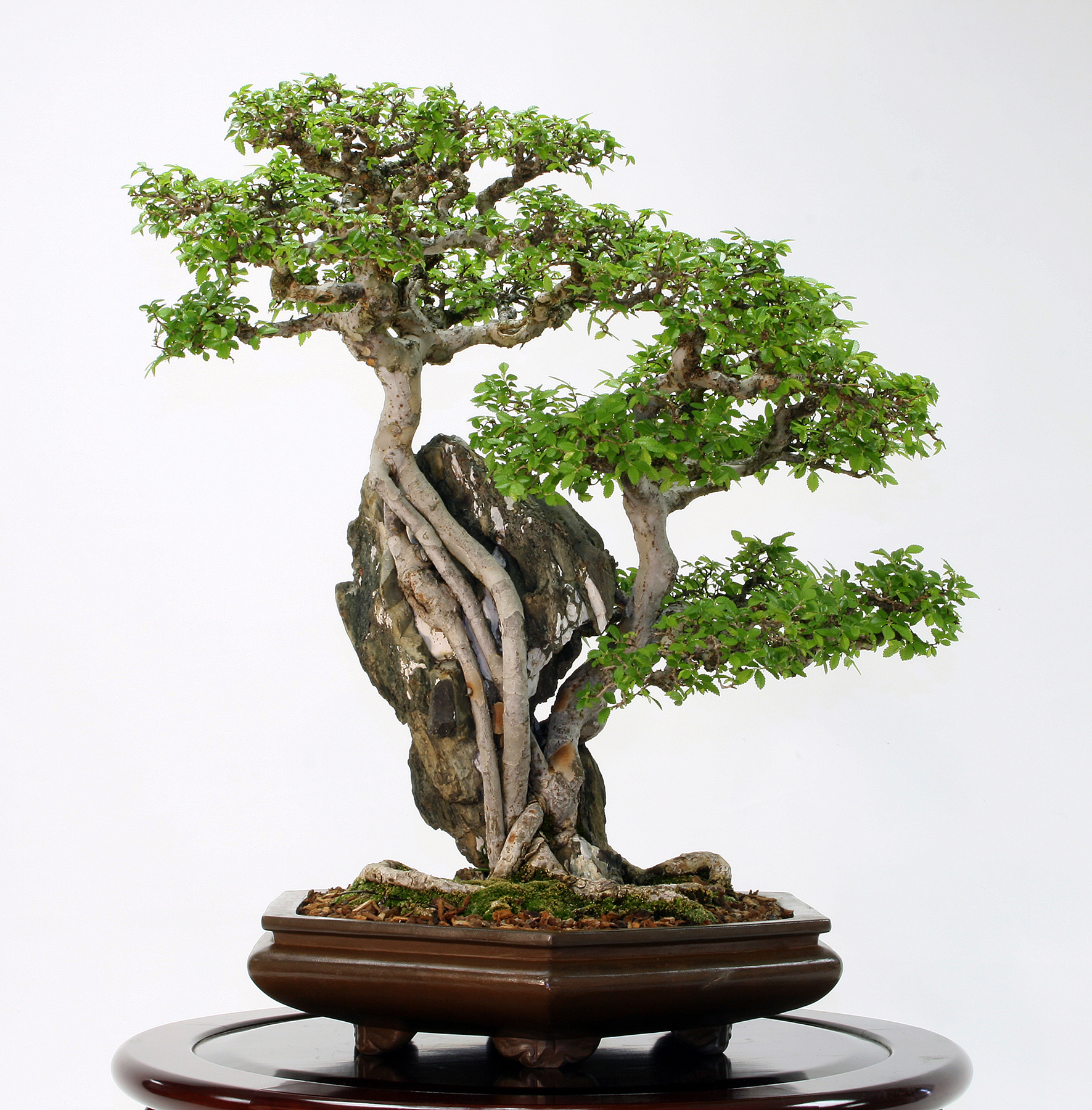
Chinese Elm
Ulmus parvifolia
In training since 1951
Gift of Yee-sun Wu, 1986
Root-over-rock style penjing showcases the Chinese love for odd-shaped rocks. The tree has been trained from a young seedling to grow around the rock.
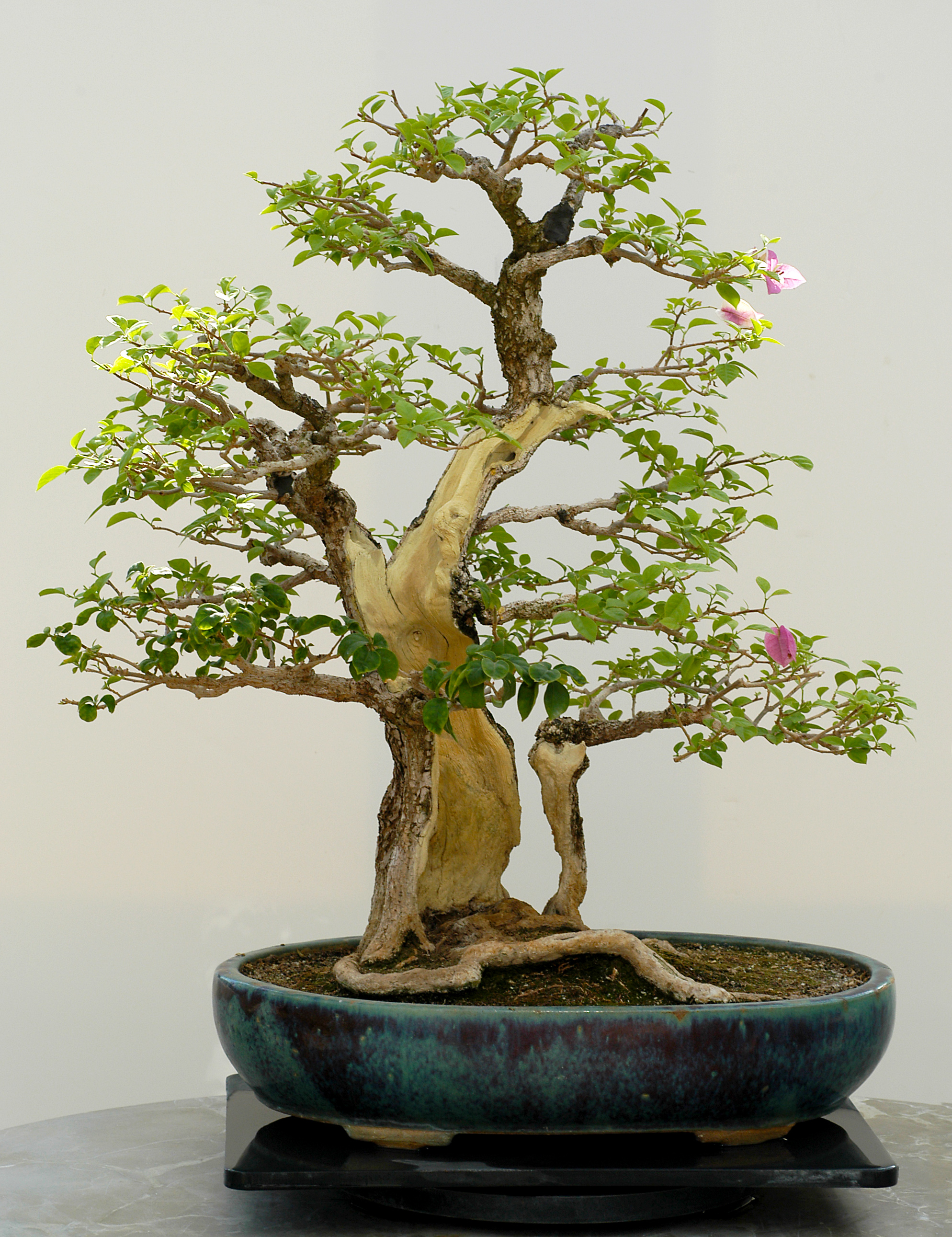
Bougainvillea
Bougainvillea glabra
In training since 1936
Gift of Yee-sun Wu, 1986
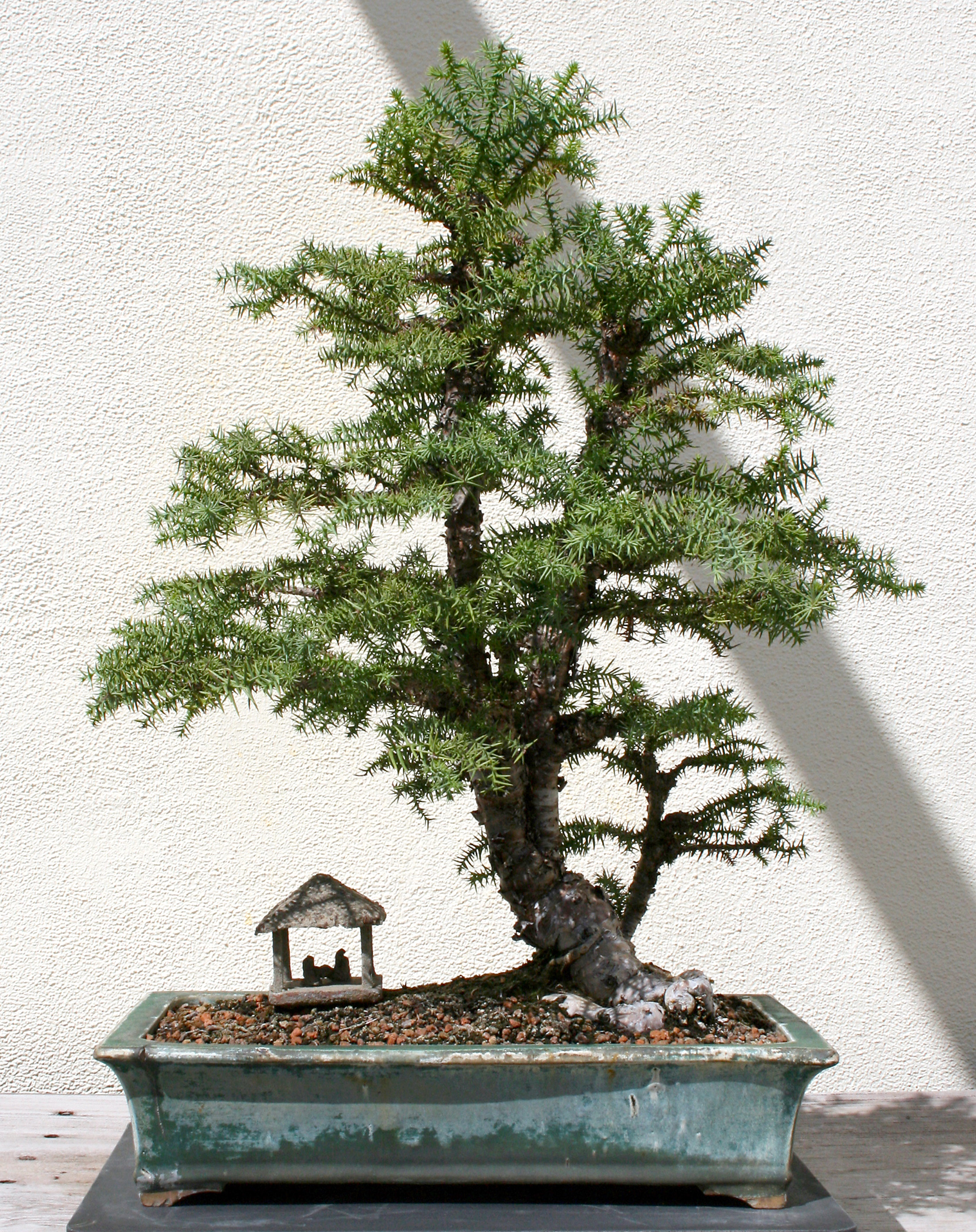
Taiwan-cypress
Taiwania cryptomerioides
In training since 1946
Gift of Yee-sun Wu, 1986
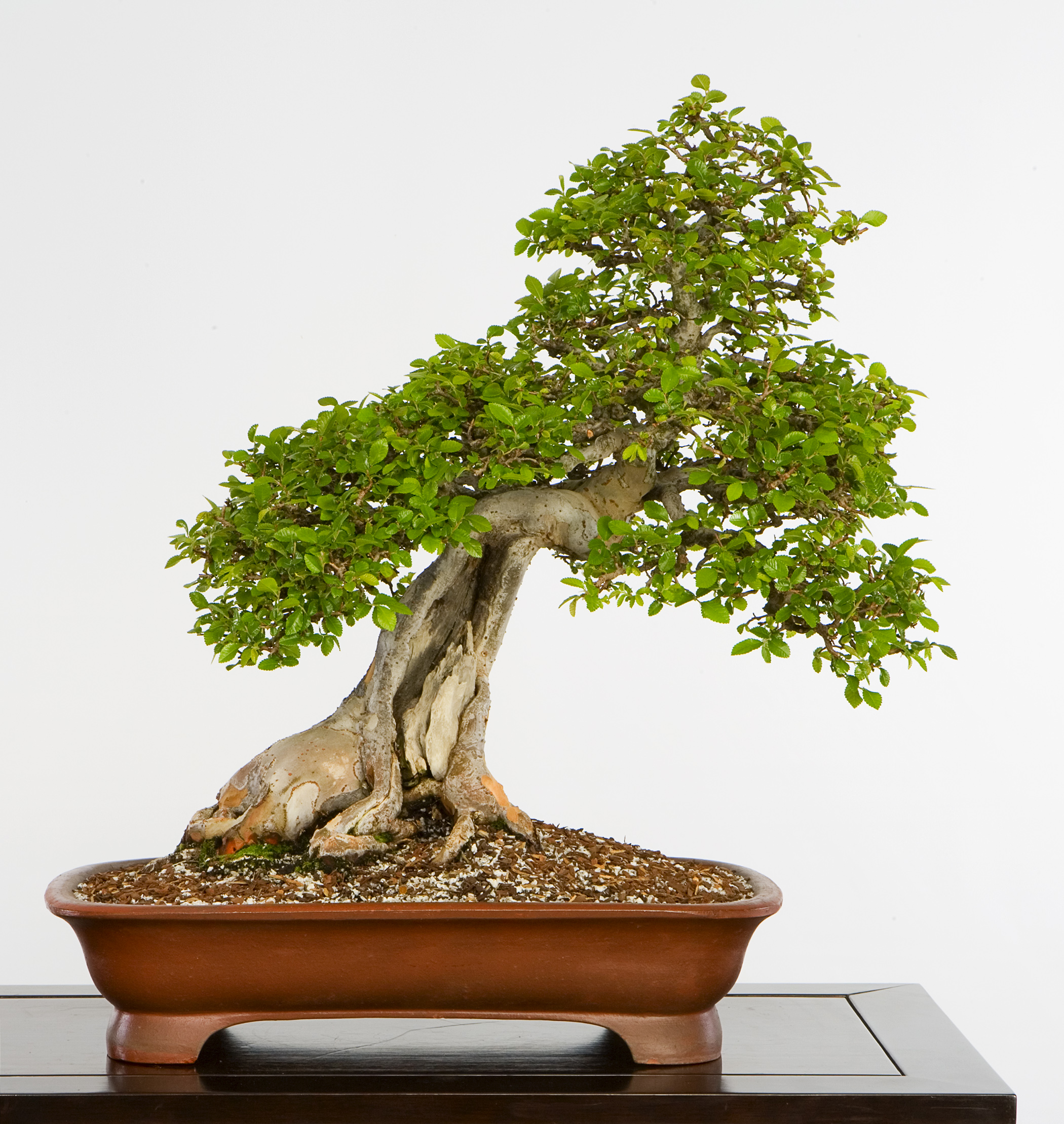
Chinese Elm
Ulmus parvifolia
In training since 1946
Gift of Yee-sun Wu, 1986
The hollow trunk and gnarled branches of this tree imply survival into old age.
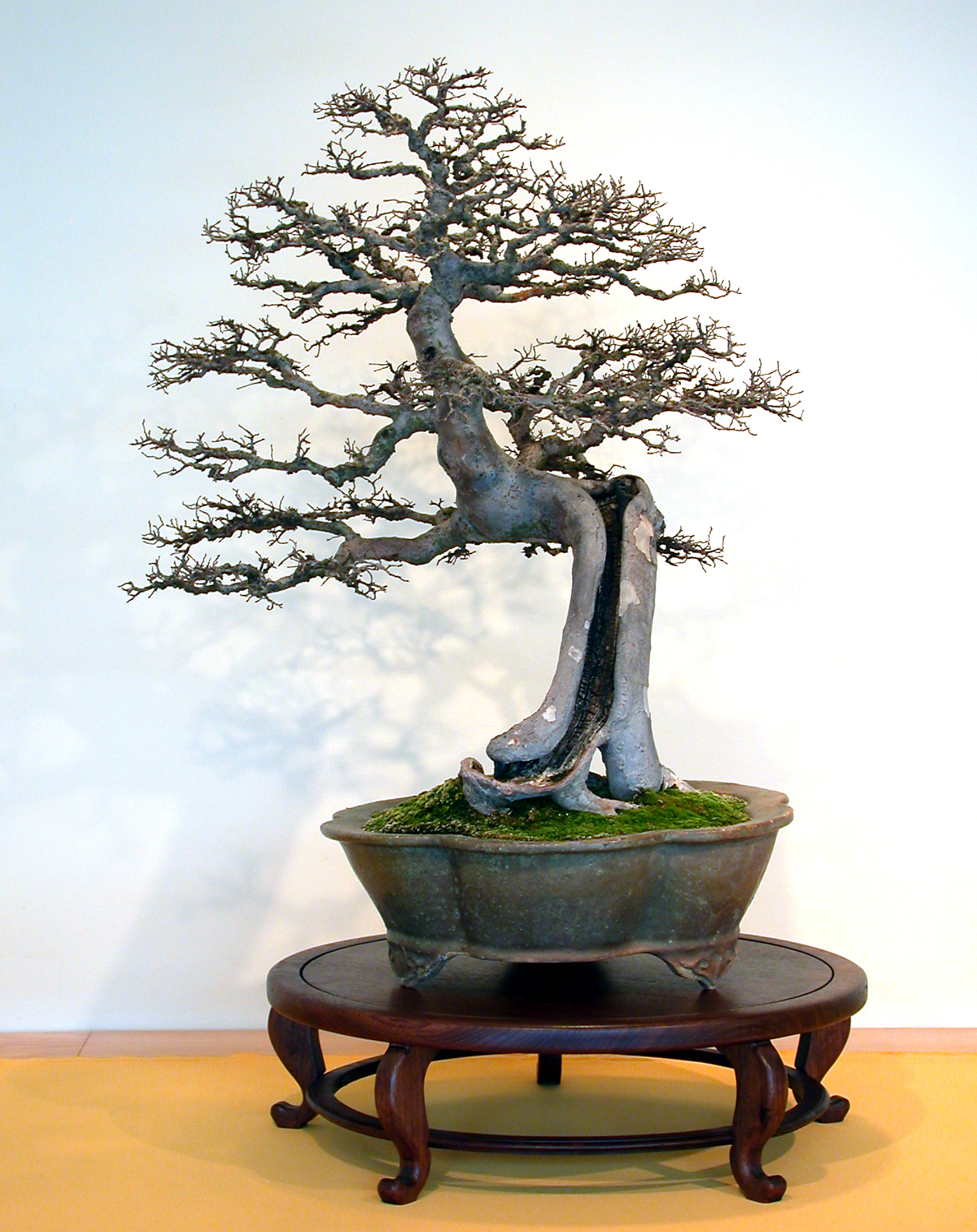
Chinese Elm
Ulmus parvifolia
In training since 1906
Gift of Yee-sun Wu, 1986
Many old Chinese paintings depict trees with angular bends like this one. The hollow trunk and exposed surface roots add to its quirky character.
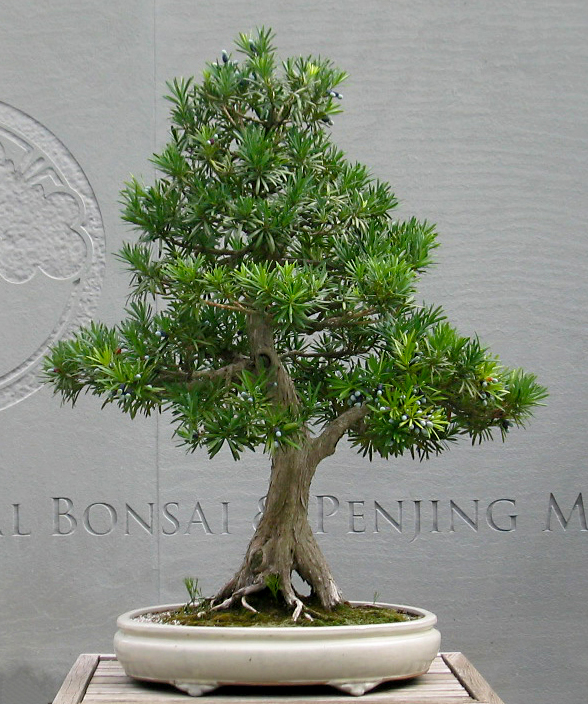
Buddhist-pine
Podocarpus macrophyllus
In training since 1956
Gift of Yee-sun Wu, 1986
This is an evergreen conifer native to mountainous areas of southern China and Japan. Small berry-like fruits ripen in the summer.
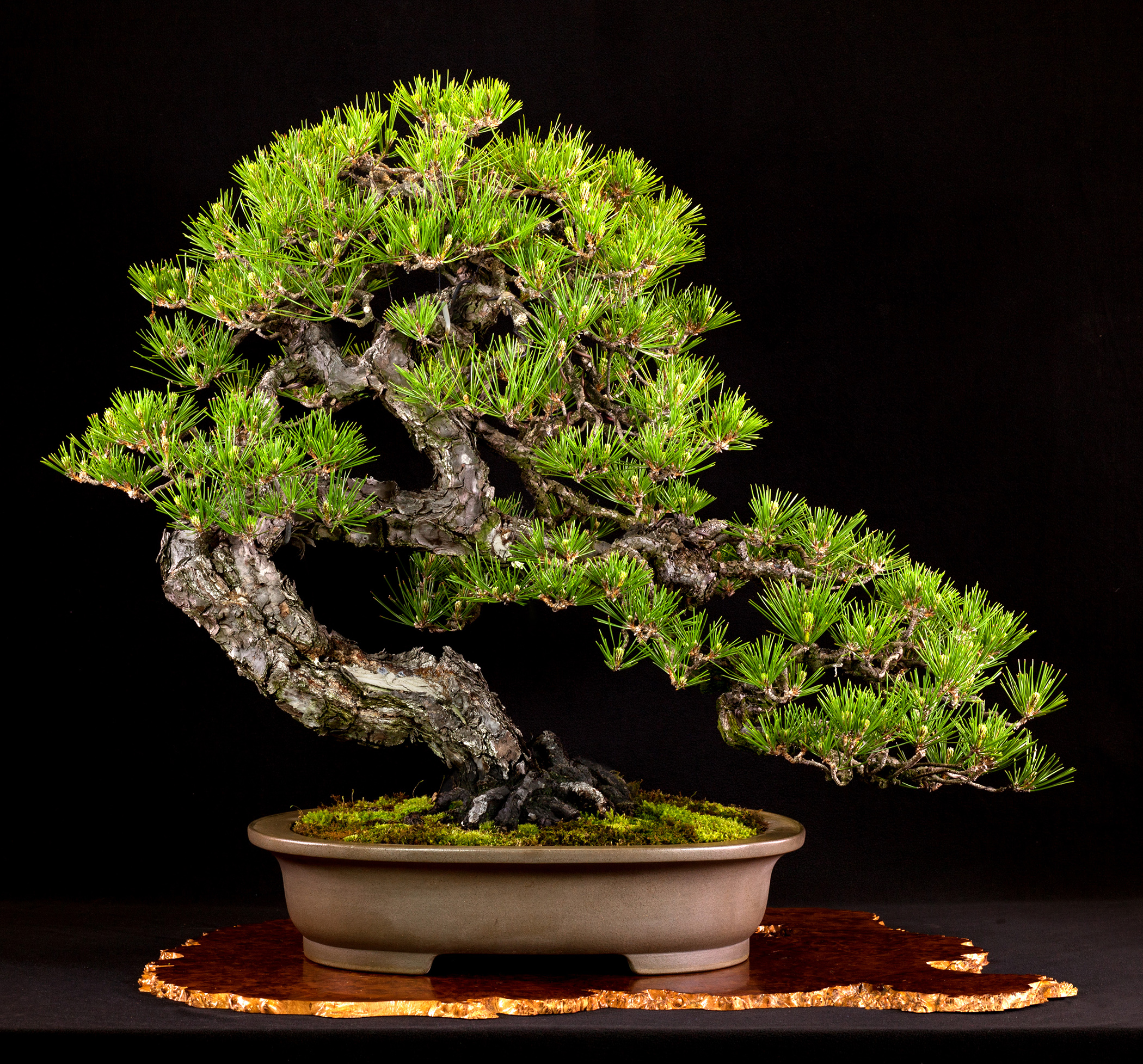
Japanese Black Pine
Pinus thunbergii
In training since 1936
Gift of Yee-sun Wu, 1986
This pine was styled by Yee-sun Wu, a master of the Lingnan School of penjing. Curvy lines of the trunk and branches are a characteristic of this school, suggesting a flowing image.

Cork-bark Japanese Black Pine
Pinus thunbergii Corticosa Group
In training since 1936
Gift of Yee-sun Wu, 1986
As this pine matures, its bark develops deep fissures and raised sections known as wings or ridges. Look closely at the branches on this tree to see this characteristic.
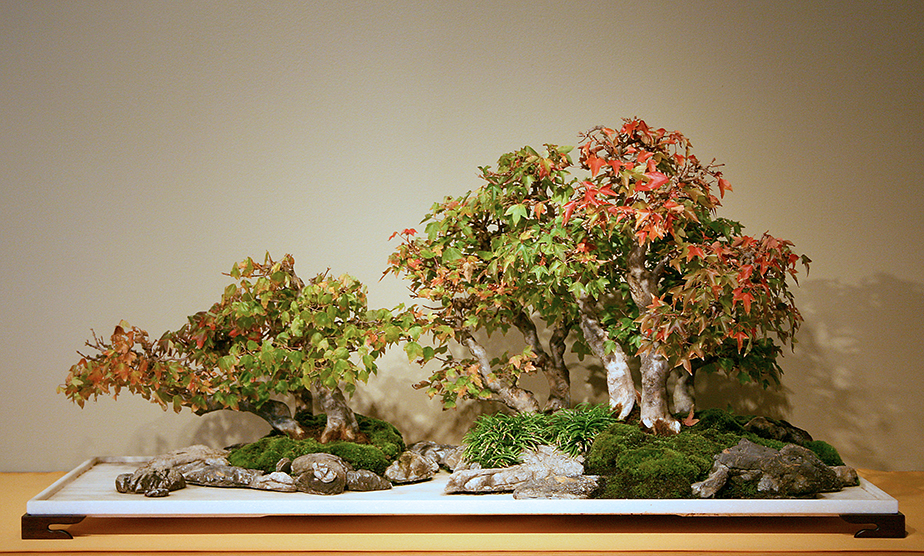
Trident Maple
Acer buergerianum
In training since 2001
Gift of Qingquan Zhao in Honor of Emily Jane McNear, 2001
This landscape scene was created by Chinese penjing master Qingquan Zhao to suggest islands surrounded by water.
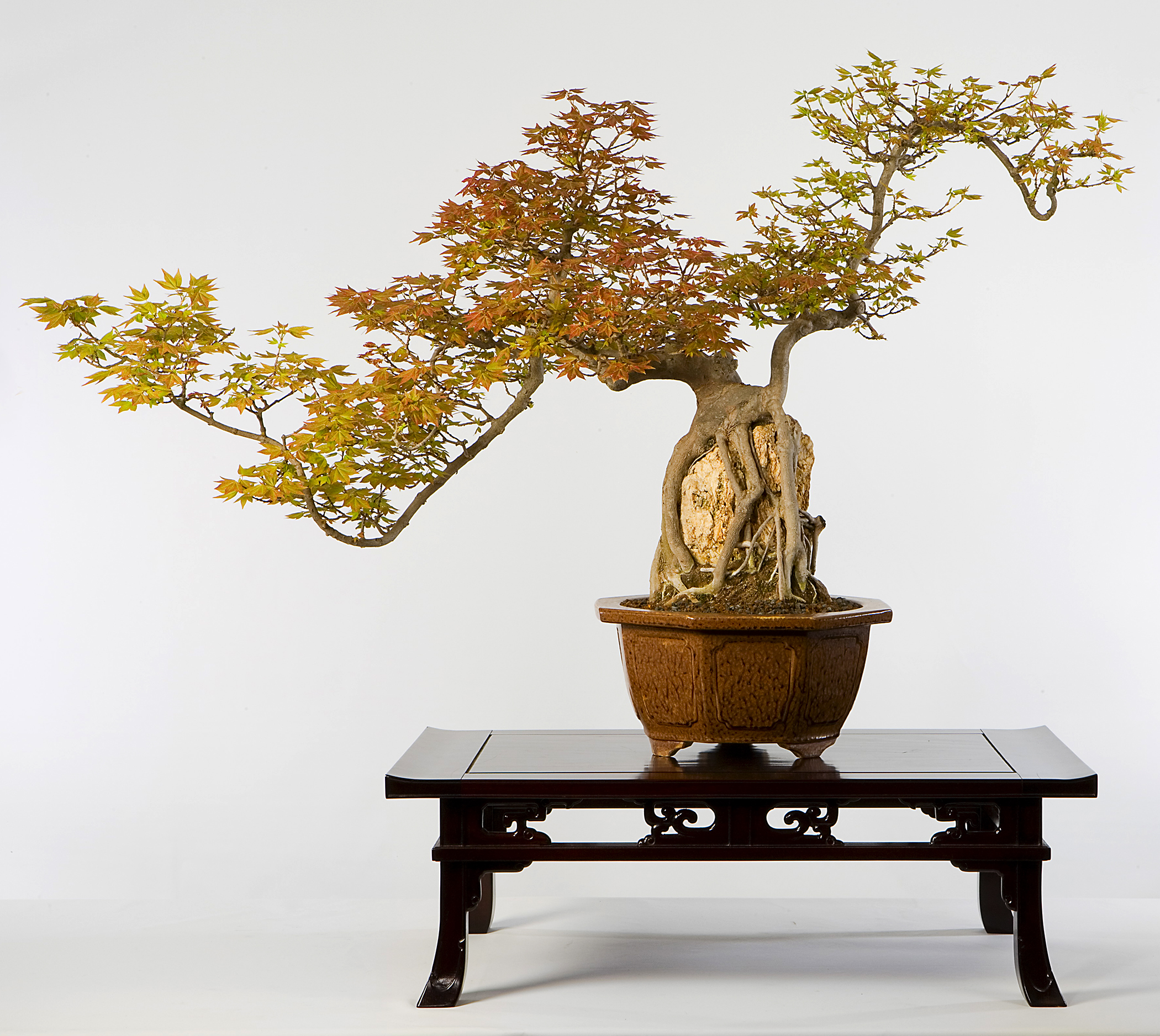
Trident Maple
Acer buergerianum
Training years unknown
Gift of Stanley Chinn, 2002
This tree was trained into a Chinese dragon shape! It is unusual to see a tree in this historical style outside of China, especially one made by a Chinese-American.
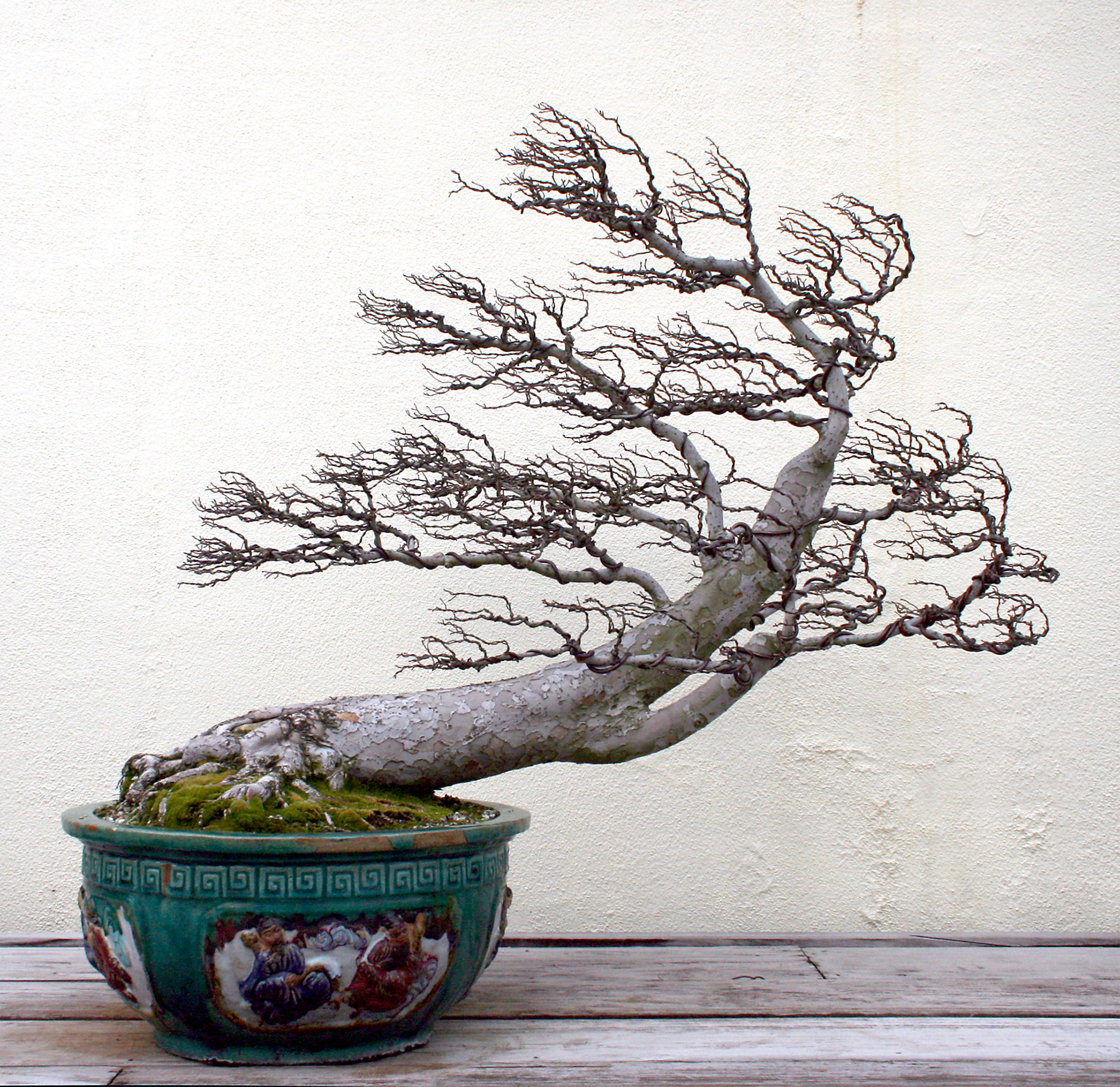
Chinese Elm
Ulmus parvifolia
Training age unknown
Gift of Stanley Chinn, 2002
To view this tree is to feel the power of the wind. Why is that? The branches appear to grow in one direction as if forced by a strong wind. The bonsai artist creates this illusion by bending the branches into position with the support of aluminum wires. This creates the distinctive windswept style.
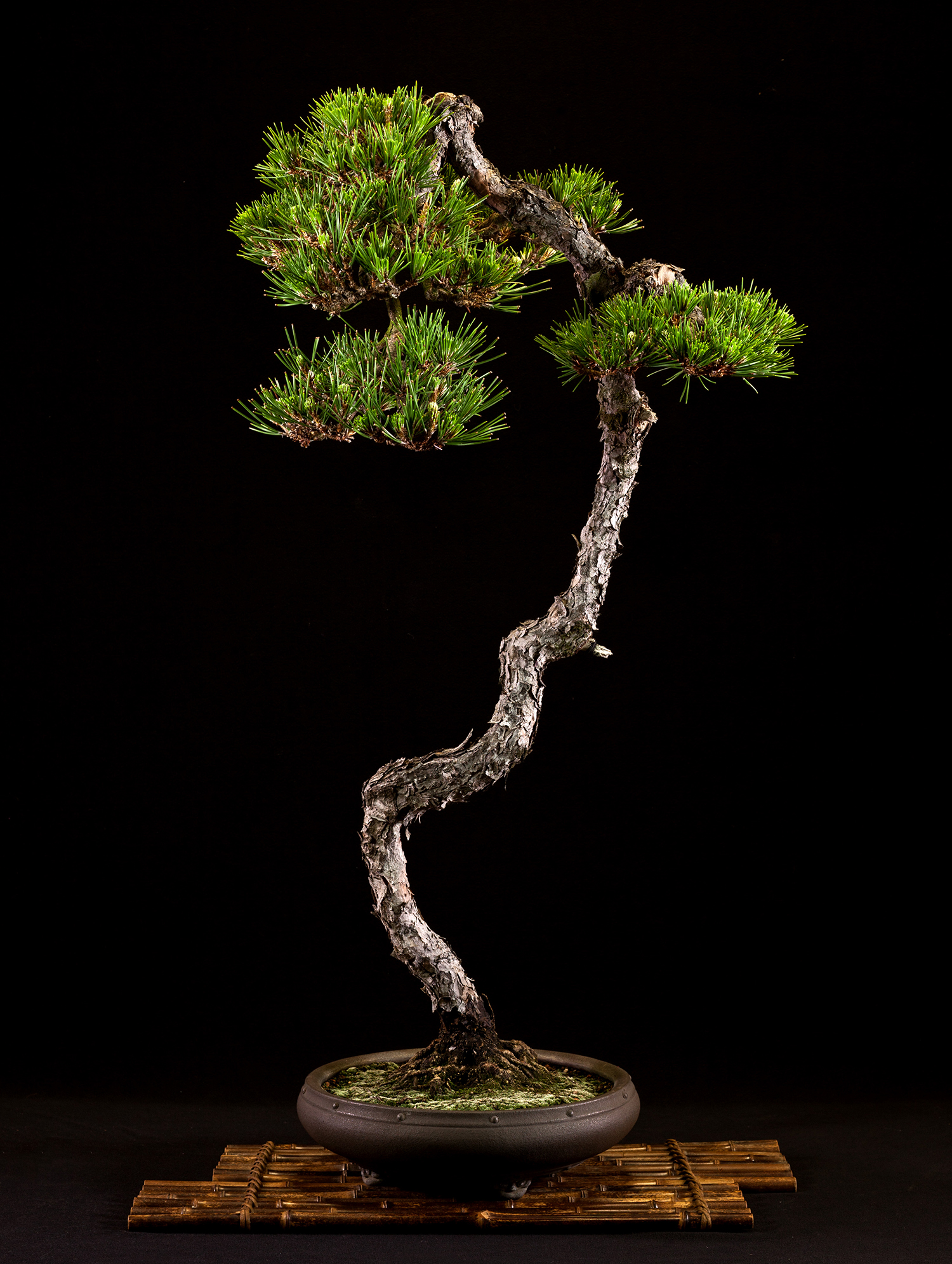
Japanese Black Pine
Pinus thunbergii
Training age unknown
Gift of Stanley Chinn, 2002
With its tall, slender trunk and sparse foliage, this pine is an example of the literati style. It resembles the type of trees featured in the paintings of Chinese literati (scholars.)
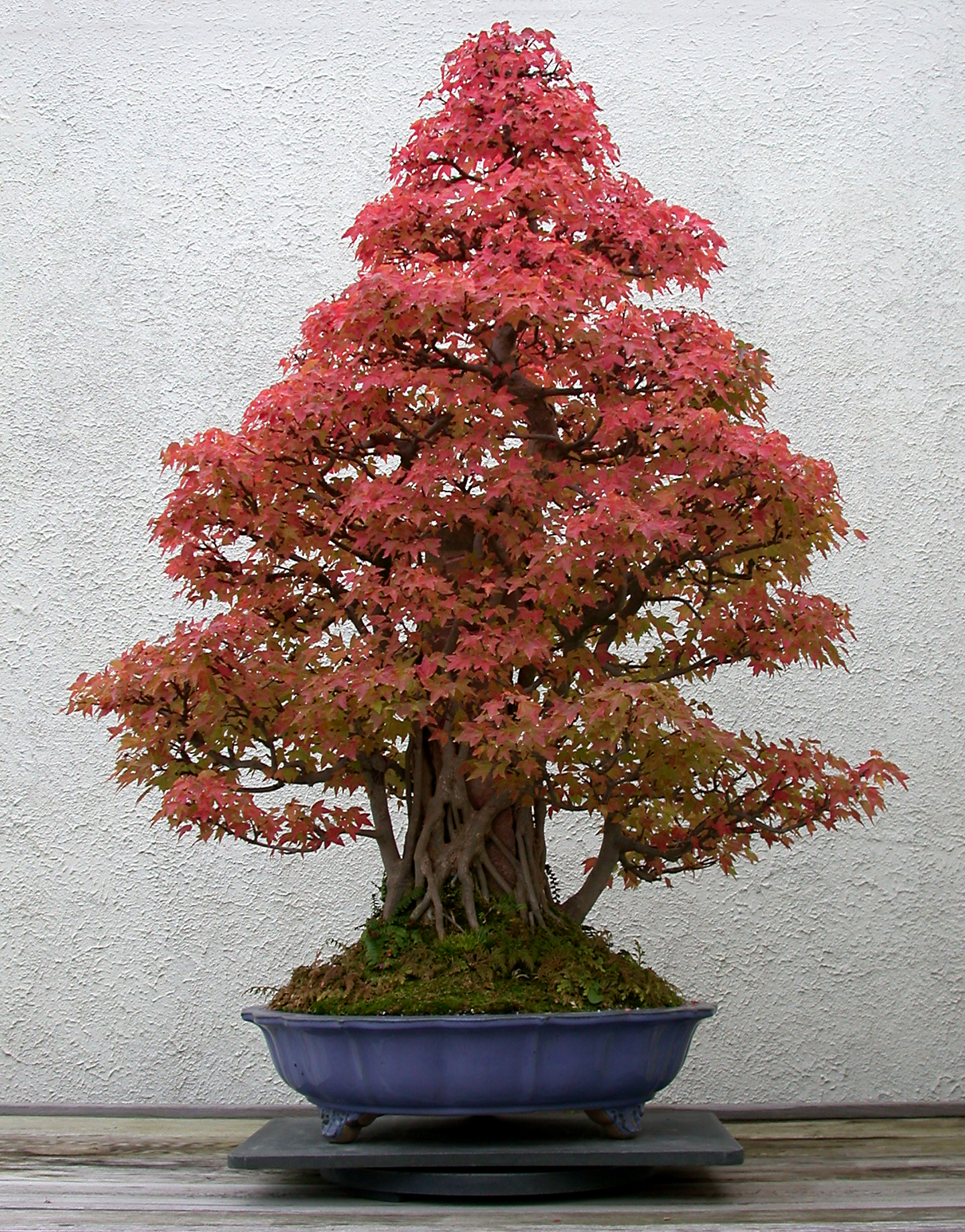
Trident Maple
Acer buergerianum
Training age unknown
Gift of Stanley Chinn, 2002
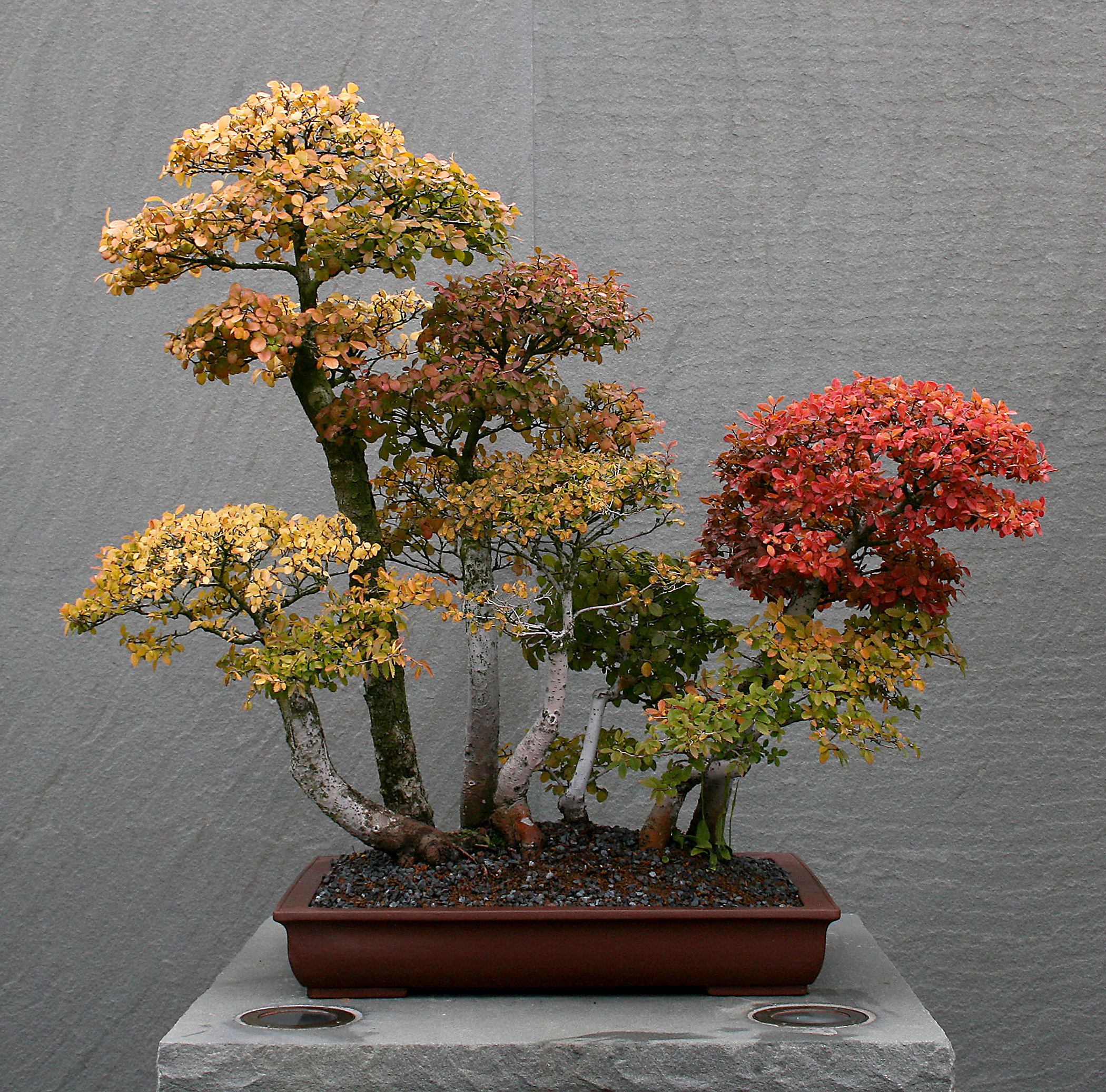
Chinese Elm
Ulmus parvifolia
Training years unknown
Gift of Stanley Chinn, 2002
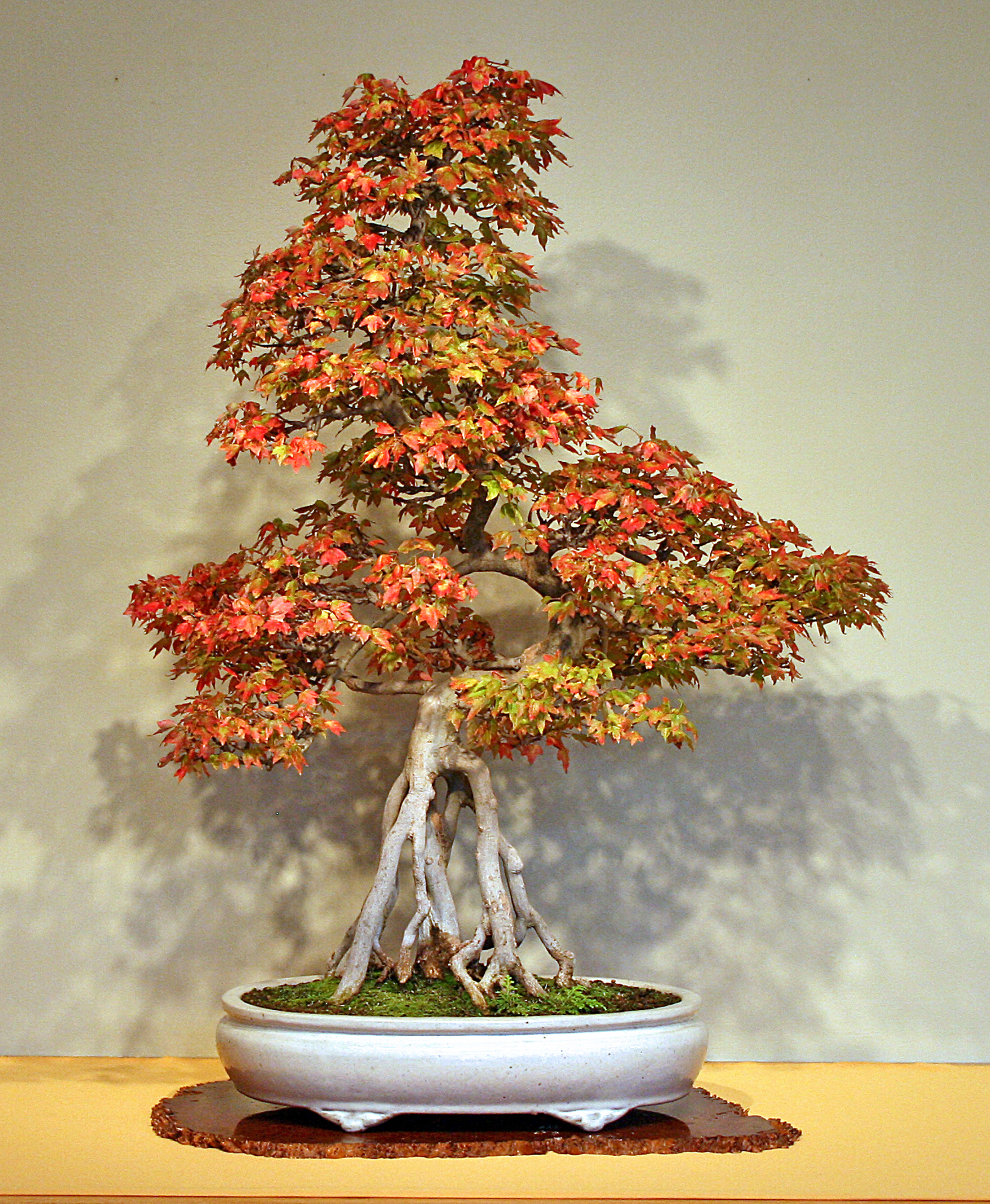
Trident Maple
Acer buergerianum
Training age unknown
Gift of Stanley Chinn, 2002

Trident Maple
Acer buergerianum
Training age unknown
Gift of Stanley Chinn, 2002
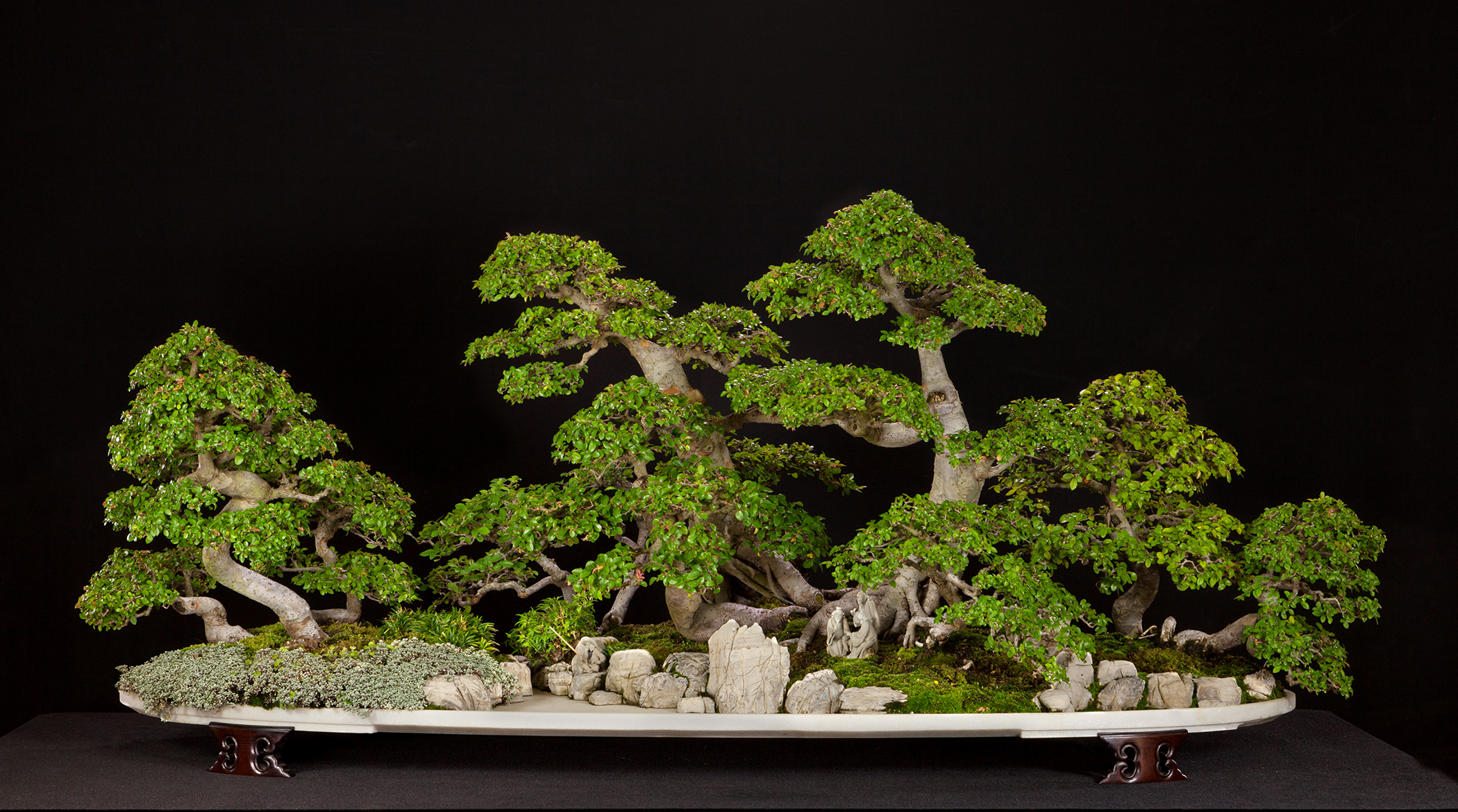
Chinese Elm
Ulmus parvifolia
In training since 2004
Gift of Yunhua Hu, 2004
This landscape penjing was created here at the Arboretum by Mr. Hu Yun Hua in 2004. He was the Director of the Penjing Research Center at the Shanghai Botanical Garden in China.
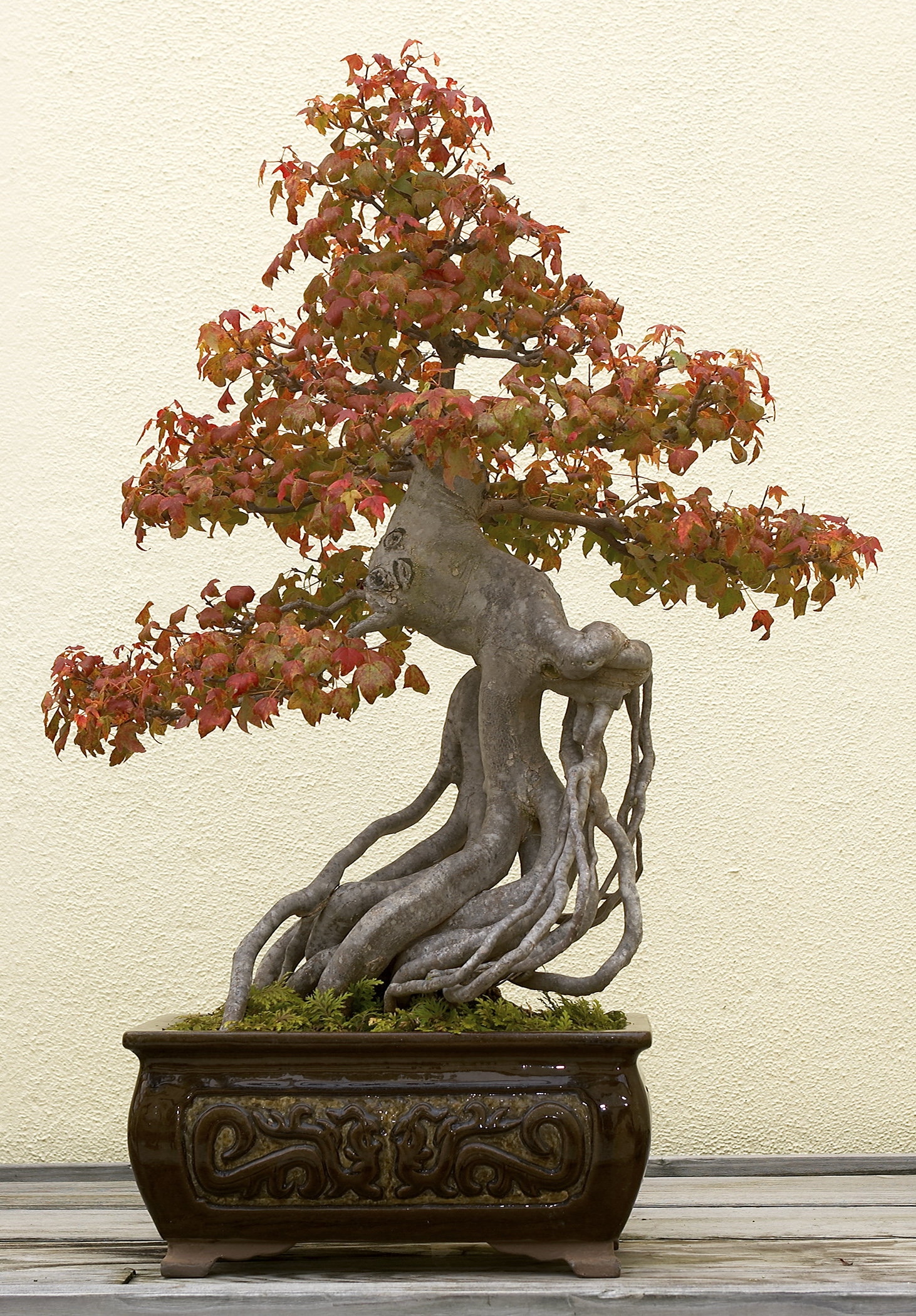
Trident Maple
Acer buergerianum
In training since 1955
Gift of Michael Levin, 1999
This is an example of the exposed-root style popular in China. It is inspired by trees growing along riverbanks. When soil is gradually washed away, their roots develop a protective bark like the trunk.
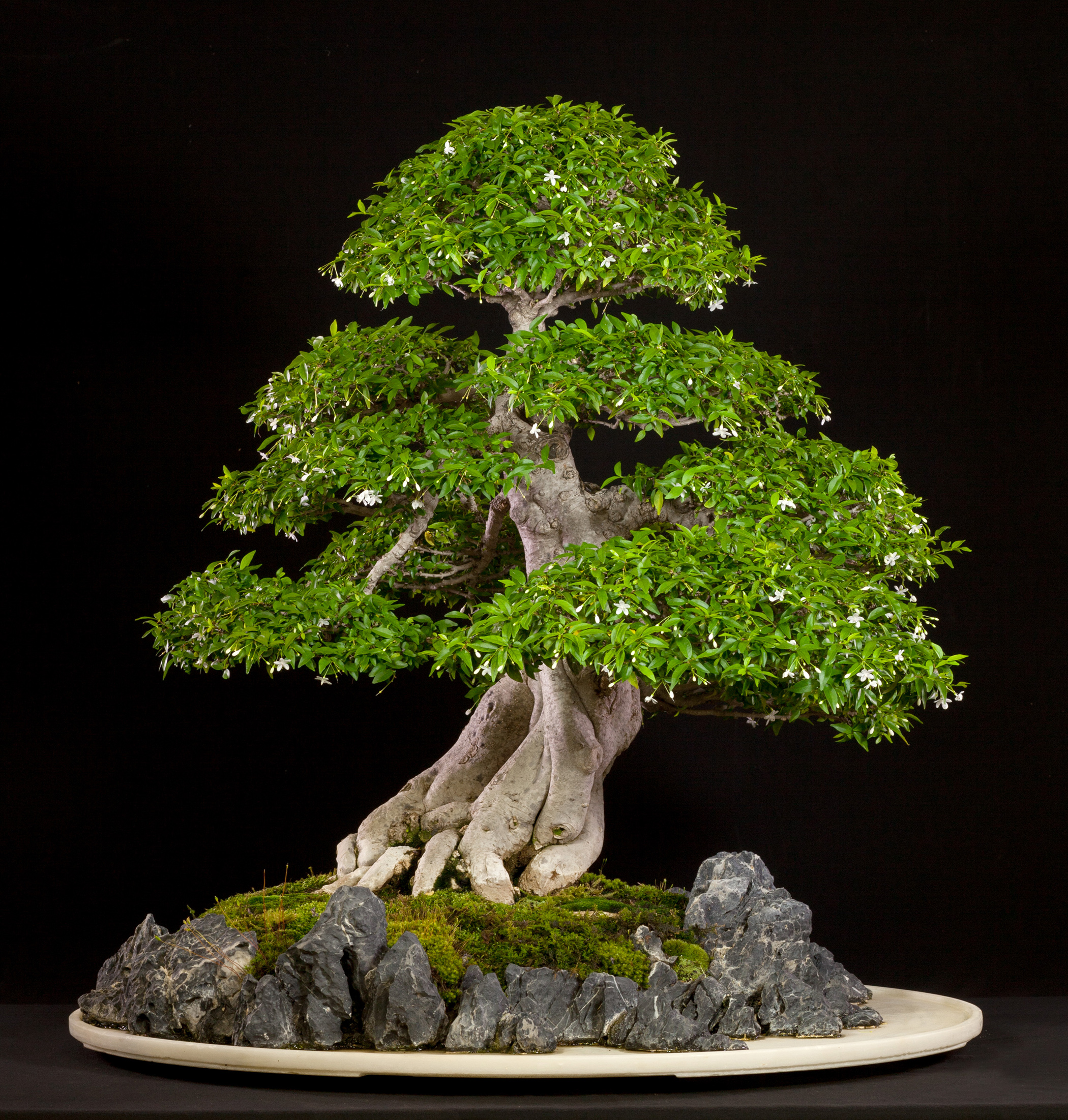
Water-jasmine
Wrightia religiosa
Training age unknown
Gift of Dr. Tang Quoc Kiet, 2002
Water-jasmine is a popular material for bonsai in southeast Asia. This one was imported from Vietnam, where rounded, cloud-shaped foliage pads on bonsai are typical.
































